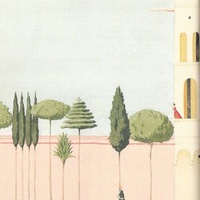4. La ciudad no es un árbol
Creada el 12 de Enero de 2018 a las 23:59 por didemnurkurtProyecto: Urban Games 2017
Tema: Urban Game 1. Intro
Coordinadores:
abarca
dacama
Valoración general
0/5 (0 votaciones)Valoración de coordinadores
0/5 (0 votaciones)Descripción
Christopher Alexander
EntradaBlog
Entrada de Blog
The Austrian architect makes a comparison about the different evolutions that the cities have suffered and the difference in two: natural cities and artificial cities. He also shows his opinion on these types of urbanizing, opting for natural ones.
A slow, regulated and to some extent intuitive growth of the cities, according to the author, form semi-reticles, characteristic of natural cities, distribution forms of the city where each element is key, since other elements depend on that element, making a symbiosis between the different areas of the city. On the other hand, today we have sought to grow by building, and much more the better. This evolution has made different areas of the city differentiated by uses that have no relation to each other, or only has a relationship with an element leaving behind others in the city, forming a tree structure, where if a branch disappears, you can continue working same, to the constrario that with the semirreticula.Curitiba, Brazil, shows the characteristics of a sustainable city as it bases its design with interdisciplinary and planned parameters, that is, semi-reticular. When the integrated city was consolidated in the 1960s, a plan was promoted that would add all the institutions of the society, in a process that, considering the environment, the means of communication, the spaces where the sources of employment would be located, the transport system, land uses, as well as leisure and teaching areas, fostered a city based on the combination of biophysical, economic and cultural aspects.
Comentarios
Aún no hay comentarios para esta entrada. ¡Sé el primero!
Accede o regístrate para comentar y puntuar la entrada.
